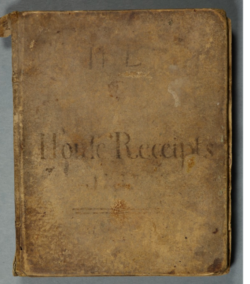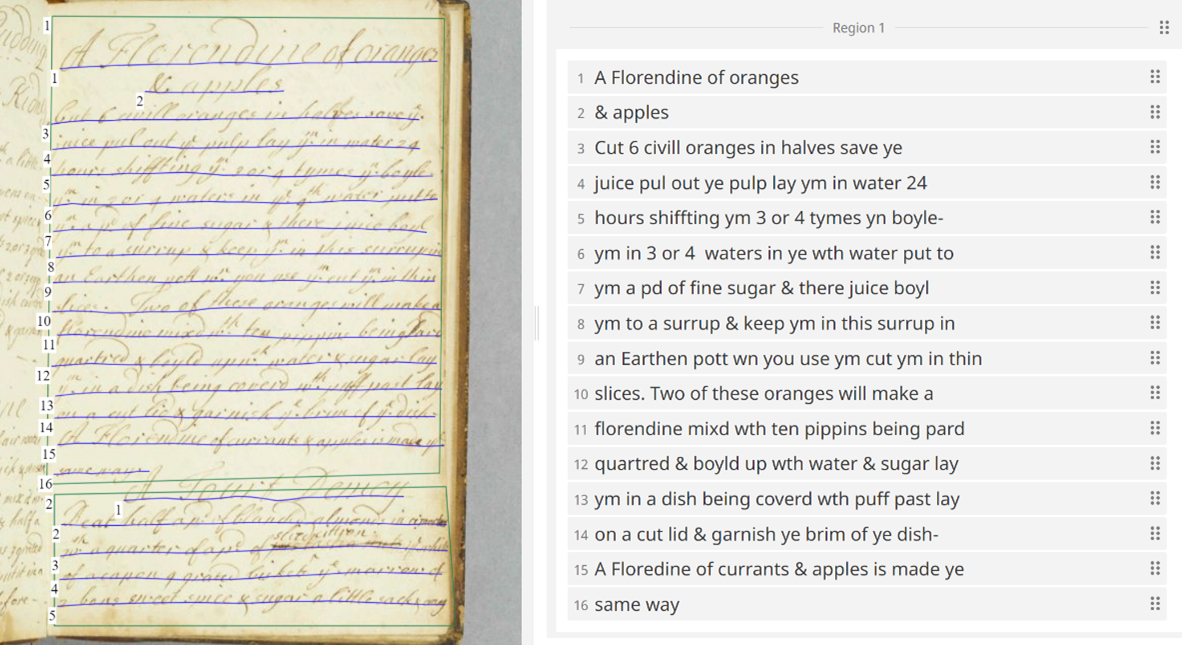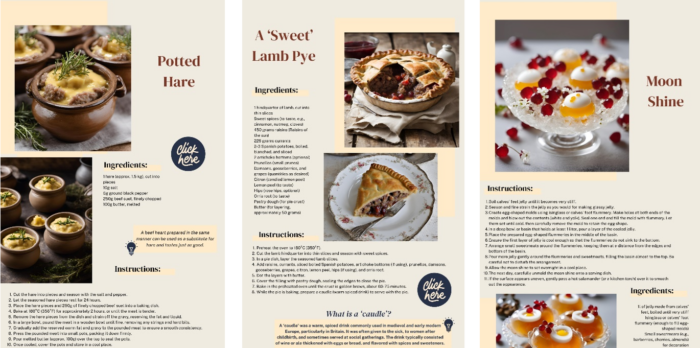From Manuscripts to Modern Meals: Digitising Historical Recipes with AI
The second of our DCCH Internship blogs is by Lili Jaber, detailing her work with on the Collections as Data project using the University's Cookery Collection
--
What if you could cook the same dishes that were enjoyed hundreds of years ago? During my internship at DCCH, I explored this fascinating prospect by transcribing historical recipes using AI and turning them into a modern and interactive digital cookbook.
Preserving old recipes is crucial for maintaining a connection to our culinary heritage, allowing us to appreciate the flavours and techniques of the past. This project showcases the innovative use of AI and design tools and demonstrates how technology can breathe new life into historical documents. By making these recipes available in a modern, digital format, they are accessible to a wider audience, allowing us to enrich our current culinary practices with forgotten techniques and ingredients. In this post, I’ll walk you through the fascinating journey of transcribing ancient manuscripts using AI, the challenges I faced, and how I used Canva to create an engaging digital cookbook. By the end of this project, I had not only gained invaluable skills but also created a resource that brings historical recipes to life for today’s cooks!
Cooking Chronicles: My internship journey
As a final year English Language and Linguistics student, my decision to try and balance dissertation writing and exam prep with an internship was definitely a brave one. However, working at DCCH was an opportunity I’m so glad I took. It allowed me to apply my linguistic skills in a new and unfamiliar setting, particularly in the realm of digital transcription and design. Although I had some previous computing experience, the internship made me realise just how much there is to learn in digital humanities. Before working at the hub, I didn’t have a grasp of how broad this interdisciplinary field actually is, interconnecting subjects like literature, history, linguistics, art, and cultural studies.

'A book of culinary and medicinal recipes in various hands' (University of Leeds SC MS Cookery/Cookery Manuscripts/MS 894), 18th Century. Image Credit: Leeds University Library
When browsing through the University’s Special Collections for the very first time, I quickly realised that the ‘Cookery Collection’ held a treasure trove of old recipes that were waiting to be unearthed. As a self-professed bookworm and avid baker, I couldn't resist delving deeper into these beautiful handwritten cookbooks. Each page revealed not just recipes, but stories from kitchens long past. The delicate scrawl and faded ink transported me to a time when cooking was as much an art form as a necessity. I quickly became particularly interested in recipes written in the Victorian period, as the era saw advancements in food preservation, kitchen technology, and the availability of ingredients, influencing how recipes were written at the time. My internship project truly flight when I decided to reimagine these historical documents in a fresh, modern light, converting them into an accessible digital resource for everyone to explore.
Reviving Recipes: Transcribing the Past
Now that I had decided on creating a digital cookbook, I needed access to plain text formats of all the recipes I intended to include. This presented the initial challenge in the project’s process, as the handwritten documents were often illegible and occasionally difficult to interpret. I also needed a substantial amount of recipes, so transcribing each page manually would have taken months!
The most feasible option was to therefore utilise an AI text recognition platform called ‘Transkribus’, which can automatically transcribe many types of historical handwritten documents. Although the platform already hosts hundreds of extensively trained models for text recognition, it can also be used to train your own models tailored to specific texts and layouts within a project. It also has options to ‘tag’ words and phrases to mark locations, areas of damage and unclear words or abbreviations. These features really helped speed up my data collection process for the project, as I was able to go through the transcriptions generated by the platform and manually edit any mistakes.

Transcription in the Transkribus dashboard of a recipe from 'Recipe book, compiled by Edward Dalton' (University of Leeds SC MS Cookery/Cookery Manuscripts/MS52), 1750. Manuscript Image Credit: Leeds University Library.
Modern Makeover: Transforming recipes using AI
With a large dataset of historical recipes now at my disposal, I needed to select the right tools to transform them into a more contemporary and engaging format. While reading through some of the manuscripts, I discovered that the historical language used was too complex for a modern audience. To address this, I decided to simplify and summarise them using ChatGPT, changing some of the historical quantities like ‘a peck of flour’ to ‘8.8kg of flour’. This made the recipes easier to follow and more accessible for contemporary cooks. However, to preserve as much of the original essence of the documents as possible, I included these historical terms in the cookbook pages, supplemented with links to their meanings, history, and additional information.

AI image generator tool on 'Canva'
To transform all this data into a more digestible format, I used Canva for its user-friendly interface and versatile design capabilities, allowing me to create a visually appealing and accessible digital cookbook. I organised each recipe page into steps and ingredients, allowing users to easily follow along and recreate these historical dishes with confidence. Each page was meticulously structured to ensure clarity and simplicity, enhancing the overall user experience and making the culinary journey through history both educational and enjoyable. AI- generated images of the recipes were also generated using a platform called ‘Gencraft’ and the ‘Magic Media’ tool on Canva, allowing readers to imagine what the dish may have once looked like! The completed resource was then transferred to ‘Heyzine’, where it was transformed into an interactive and immersive digital book. This platform allows users to flip through the pages of the digital cookbook as if they were reading a physical book, enhancing the user experience with a blend of modern functionality and traditional charm. It also allows the addition of links, multimedia elements such as videos and audio clips, and enables easy social media sharing, making the cookbook not only informative but also interactive.
The final product…
The end of my internship project resulted in the creation of a vibrant digital cookbook that breathes new life into centuries-old recipes. Using a combination of AI tools and graphic design, the digital resource ensures accessibility for a modern audience while preserving the historical authenticity of each dish. The images below are some of my personal favourite recipes featured in the book, but you can explore the entire digital cookbook here.

Pages from the completed digital cookbook showing recipes for potted hare, a sweet lamb pie and moon shine jelly.
This project has been incredibly transformative for me. I gained proficiency in using various AI tools and significantly enhanced my graphic design skills and creativity. These new experiences have also broadened my understanding of digital humanities, and deepened my appreciation for how digital tools can revolutionise research methods and scholarly communication. The experience has inspired me to explore career paths in digital humanities and data science, where I can continue to innovate using computational tools to analyse and interpret humanities data, and to explore new ways of presenting and studying historical and cultural information.
